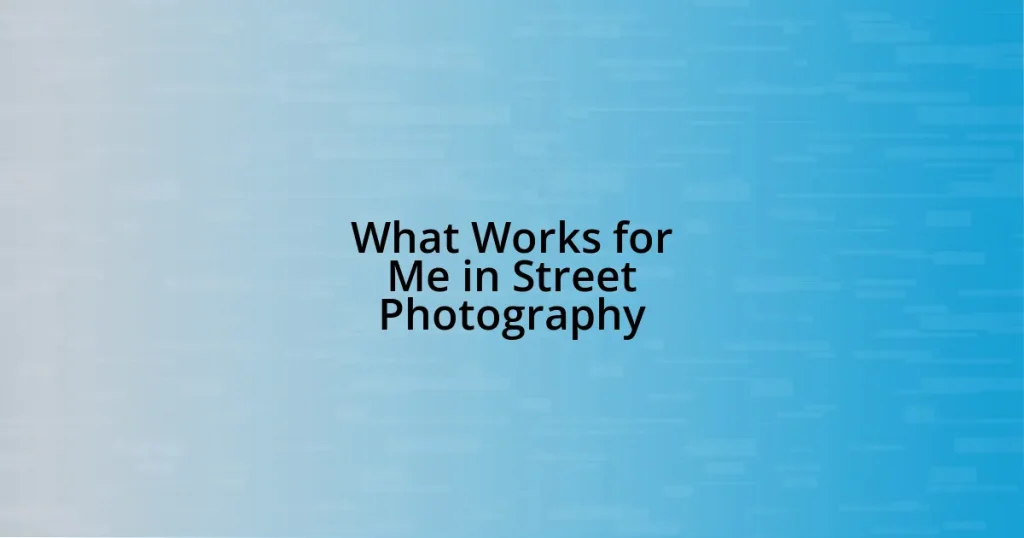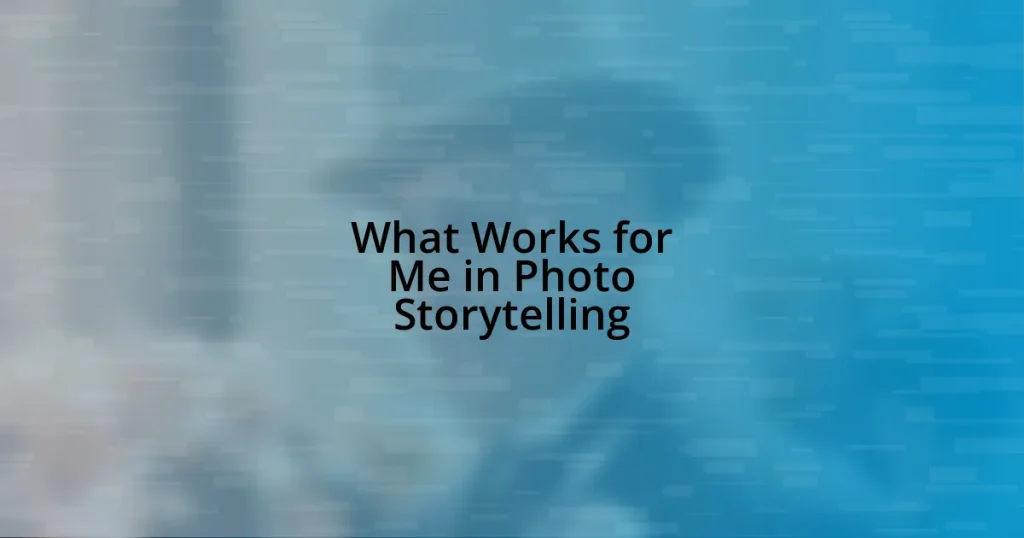Key takeaways:
- Image curation is about creating a narrative and evoking emotions, enhancing both the creator’s and viewer’s experience.
- Identifying and organizing one’s best work involves emotional impact, storytelling, and personal connection, aided by feedback.
- Utilizing technology such as AI and cloud storage streamlines the curation process, making it easier to access and reflect on past work.
- Showcasing curated collections fosters engagement and shared experiences, highlighting personal growth and evolution as an artist.

Understanding Image Curation
Image curation is more than just gathering photos; it’s about telling a story and creating a visual experience. I remember the thrill I felt while selecting images for a project—every photo I chose seemed to resonate with a specific emotion or idea. It’s that connection that makes curation so powerful: how can a single image evoke memories or inspire ideas in the viewer?
When I began curating my own images, I realized the importance of themes. I’ve learned that grouping images around a central concept not only guides the audience but also offers deeper insights into my own creative process. Have you ever found yourself lost in a series of images, wondering how they relate? That’s the beauty of curation—it can provide clarity amidst chaos and a fresh perspective on what previously seemed random.
Emotions play a significant role in my curation journey. I often find myself asking, “What do I want the viewer to feel?” This question has shaped my choices and led me to some surprising decisions. For instance, I once paired a vibrant, joyful snapshot with a somber black-and-white image, which created a poignant contrast. It’s in these combinations that I find my voice and invite the audience into my world.

Identifying Your Best Work
Identifying your best work can feel like a daunting task. When I sifted through my collection, I decided to look for those images that stopped me in my tracks—photos that made my heart race just a bit faster. It was eye-opening; those images often held a powerful story or conveyed a strong emotion that hadn’t fully registered on my initial review.
I found it helpful to create a shortlist of my favorites, which allowed me to compare them side by side. I was surprised by how different they felt when placed in direct competition. For example, a serene landscape photo I loved lost its shine against a candid shot of laughter shared between friends. By analyzing why certain images moved me more than others, I began to understand my unique artistic voice, helping me to curate with confidence.
To further refine my selection, I sought feedback from trusted friends and fellow creatives. Their perspectives often highlighted aspects I hadn’t considered. For instance, a close friend revealed how one of my seemingly ordinary street shots sparked nostalgia for her childhood. That moment reinforced for me the idea that the images we cherish might spark connections in others that we had not anticipated.
| Criteria | Example |
|---|---|
| Emotional Impact | A photo that evokes joy vs. one that brings sadness |
| Storytelling | An image that tells a story versus one that is visually appealing |
| Personal Connection | A favorite travel memory vs. a random snapshot |

Organizing Images Effectively
When I tackled the task of organizing my images, I found that a simple yet flexible system works best for me. I started by creating folders based on themes, events, or even emotions that resonated with me during the shoot. This strategy not only simplifies navigation but also evokes memories connected to those images each time I browse through them. I can still remember the rush of nostalgia I felt sorting through my travel photos, reliving those adventures as if they happened yesterday.
- Create main folders for broader categories, like “Travel,” “Family,” and “Nature.”
- Use subfolders to delve deeper; for instance, “Travel” can include locations like “Italy” or “Japan.”
- Implement tagging for quick searchability; tags can reflect emotions like “joy,” “serenity,” or “adventure.”
- Regularly revisit and reevaluate: I’ve found that what resonates changes over time, so why not adapt my organization as well?
- Consider digital tools or apps for added efficiency, which I’ve found invaluable in keeping everything tidy.
By maintaining a consistent and thoughtful organizational system, I’ve discovered that I can access my creative past with ease, often sparking new ideas as I look at older images through a fresh lens.

Utilizing Feedback for Improvement
Utilizing feedback can transform your creative process in unexpected ways. I remember when a mentor on a photography forum critiqued my work and suggested I focus more on composition. At first, it felt disheartening, but then I realized that his perspective opened up a world of possibilities. Embracing that feedback led me to experiment with framing and directing the viewer’s eye in a deliberate way, which has since enhanced the overall impact of my images.
Seeking input isn’t just about finding flaws; it’s also about discovering strengths. One time, I shared a series of nature shots with a group of artist friends, expecting mostly technical critiques. Instead, they praised an unplanned detail I hadn’t noticed—a little bird that had flown into the frame. This moment taught me that sometimes the magic in a photo comes from the unexpected, reminding me to always be open to spontaneous moments during shoots and to appreciate subtleties that may not initially stand out.
Additionally, I’ve learned to ask targeted questions when soliciting feedback. Rather than simply asking, “What do you think?”, I might ask, “Which image resonates most with you and why?” Getting specific responses can uncover deeper insights into how others perceive my work. I cherish these interactions; they’ve enriched my understanding of emotional resonance in photography, reinforcing the belief that every image tells a unique story—and the interpretation of that story can change with each viewer.

Leveraging Technology for Curation
Leveraging technology has dramatically influenced how I curate my images. For instance, I recently discovered software that not only organizes my photos but also uses AI to suggest optimal tags. I was astonished at how this feature identified themes I hadn’t even considered, leading me to new creative ideas. It’s fascinating, isn’t it, how a tool can help you see your work from a different perspective?
I’ve also embraced cloud storage solutions, allowing me to access and curate my images from anywhere. One late night, while sipping on a warm cup of tea, I found myself revisiting old photos on my tablet, which wouldn’t have been possible without this technology. The convenience is unparalleled. Being able to effortlessly pull something from my collection at a moment’s notice not only keeps my workflow fluid but often sparks inspiration when I least expect it.
Additionally, using curation apps with community features has deepened my connection to other photographers. I love sharing curated galleries and receiving instant feedback from a global audience. It’s almost like having a digital gallery where art becomes a conversation. I often wonder, how might our perspectives shift if we could hear the stories behind every image shared? Through these technological avenues, I’ve found a richer, more interactive experience in my curation process.

Showcasing Your Curated Collection
Showcasing my curated collection has been a transformative experience that taught me the importance of storytelling through images. When I first set up an online gallery, I carefully selected pieces that not only represented my journey but also evoked emotions I hoped to share. I still remember the thrill of seeing visitors engage with my work—each comment and ‘like’ felt like a silent nod of approval, deepening my connection to both my art and my audience.
One memorable showcase was a virtual exhibit I organized on social media, highlighting my travel photography. I decided to write personal captions for each image, sharing the emotions I felt during those moments. I was pleasantly surprised when people began sharing their own stories related to my photos. It was in those exchanges that I realized how powerful a visual can be—an image can spark a myriad of memories and feelings in someone else, making the collection not just mine, but a shared experience.
Curating isn’t just about displaying images; it’s about showcasing growth. As I revisited my work for exhibitions, I noticed a clear evolution in my style over time—from timid snapshots to more deliberate compositions. I often ask myself, “What themes emerge from my collection?” This reflection has not only propelled my artistic journey forward but also engaged my audience in a conversation about progress and change, reminding us all that art is a living dialogue between creator and viewer.

Reflecting on the Curation Process
Reflecting on the curation process has been an eye-opener for me. Each image isn’t just a photo; it’s a fragment of time filled with memories and emotions. I can still feel the rush of joy when I stumbled upon a forgotten snapshot of a breathtaking sunset during a childhood vacation. It made me wonder—how many other pieces of my life are hiding in plain sight, waiting to be revisited?
As I organized my collection, I started noticing patterns in my choices—like a recurring theme of nature intertwined with urban life. This realization struck me deeply; it’s almost like the images themselves were trying to tell me a story. I often reflect on whether curating my work could lead to defining my artistic voice. Could the act of curation become a pathway to understanding who I am as an artist?
I also found that stepping back to critique my own work was humbling. There were images I initially adored that, when revisited, felt lackluster and uninspired. This discovery brought a wave of vulnerability, but also growth. I began asking questions like, “What does this image really convey?” and “What if I captured it from a different angle?” It’s in these moments of reflection that I gauge my progress—not only as a curator but as a creator, and it’s a journey I cherish deeply.
















